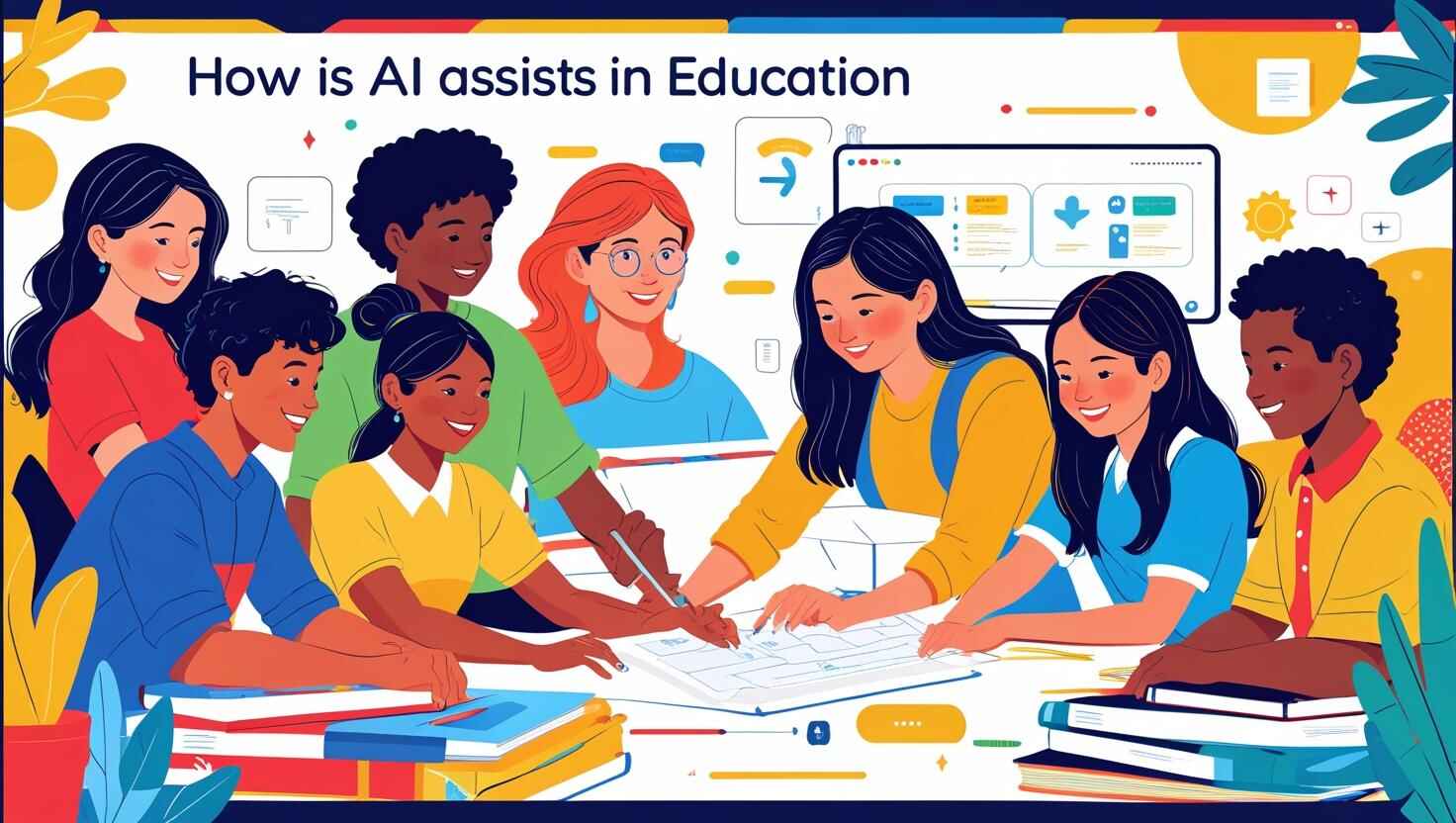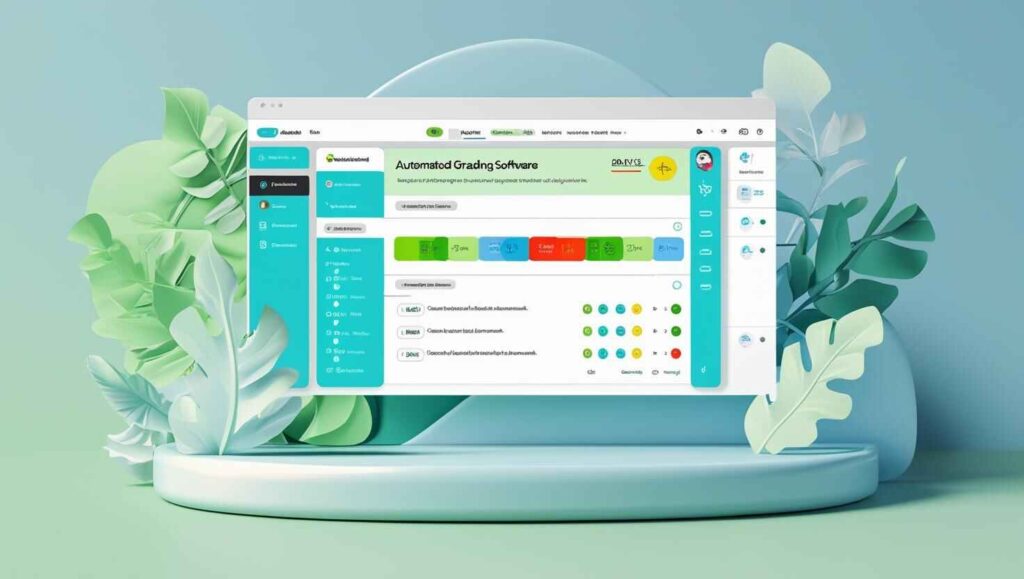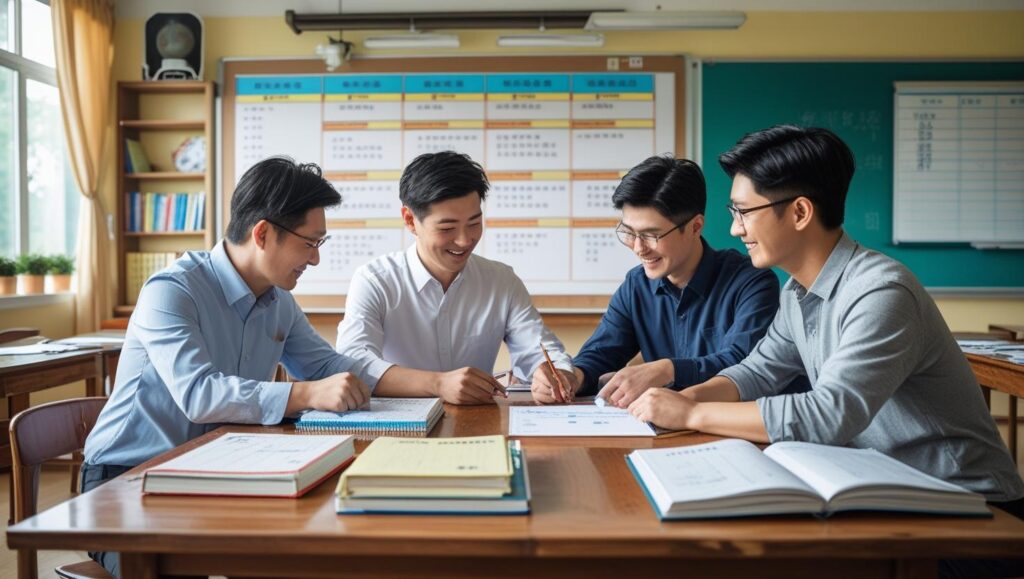
10 Ways How AI Can Help in Education Today
Introduction
Artificial intelligence is changing the way education works. It makes things easier for teachers and staff during the day.
It also brings big changes to student learning. As artificial intelligence keeps getting better, people begin to see many potential benefits.
You can see this when you use adaptive learning platforms, add new ways to make lessons, or work to make classes open to all.
When teachers use artificial intelligence tools like adaptive learning platforms and generative ai, they can help students take part more in class.
These tools also make it easy for teachers to keep up with analytics and check how students are doing. In this blog, we talk about ten simple ways that ai is helping education right now.
We will look at how these artificial intelligence tools can help students and teachers. You will see how artificial intelligence, student engagement, and accessibility keep making education better for both students and teachers.
10 Practical Ways AI Can Support Education Today
AI is starting to bring many good things to the education sector. It helps student learning and makes the work for teachers easier.
Generative AI can help teachers to make lesson plans that fit their classes. With artificial intelligence, adaptive learning platforms give every student a learning path that works best for them.
The technology helps students by giving them personal study plans. Students also get fast feedback on how they do, so they know what to work on.
For teachers, artificial intelligence can take care of many administrative tasks. This means they have more time to focus on professional development and teaching.
These big changes are taking place in real classrooms because of artificial intelligence and generative ai.
1. Personalised Learning Pathways for Students
Artificial intelligence is good at helping with personalised learning. It can change how teachers guide students based on individual student needs.
Adaptive learning platforms use analytics to see what students know and where they face problems. Then, these platforms change the content to fit each student.

This helps students stay interested. With this way, every learner can go at their own speed. It helps students remember more and really understand what they learn.
Personalised learning systems show what students did before. Then, the systems pick activities or tools to fit each student’s way of learning and what they want.
This custom way to learn gives people control of their own learning. Students feel more sure of themselves when they take part in lessons.
Learning that is designed for each learner can make a bigger difference. It helps all parts of education get better.
When learners get the right tools that fit what they need right from the start, they can pay more attention. They will feel more motivated. They also get ready to deal with complex concepts as they move on.
2. Intelligent Tutoring Systems for Individual Support
Intelligent tutoring systems are changing the way students get help with learning. These artificial intelligence tools use smart technology to figure out what people know and what they do not.
The intelligent tutoring systems show where there are gaps in learning. Then, they give exercises to help fill those gaps.
A big advantage of these systems is that they give immediate feedback. This helps students quickly see what they did right, what needs work, and how to get better at it. With artificial intelligence, learning be easier and more personal for everyone.
AI-powered tutoring solutions use advanced technology to change each session based on what the student needs.
These tools focus on individual student needs and give detailed feedback every time. With this help, students can feel more sure of themselves and get a better handle on what they learn in each subject.
The learning experience is lively and always changing, not stuck on one plan for all students. AI makes it possible to give each person the help they need, so they can do well.
These intelligent tutoring systems can do some everyday parts of teaching on their own. Because of this, teachers have more time to do things that only people can do, such as helping students be creative or handle their feelings. The result is a better mix of ai and what teachers can bring, and this works well for everyone.
3. Automated Grading and Instant Feedback
Artificial intelligence helps teachers grade student work faster. It uses machine learning to check answers.
This means grading happens quickly and without being unfair. Automated grading lets students get feedback right away. So, they can see what they did wrong and fix it. This gives them more time to learn and move ahead.
Teachers also get many benefits from this. When AI handles daily administrative tasks like grading, teachers get more time.
They can use this time to plan lesson plans or spend it with students. AI can also give constructive feedback. This makes it easier for teachers to see where students have problems. So, teachers can help those who need it most.

AI does more than save you time. It also makes grading more fair by removing biases. This helps every student get a fair score on the test.
The results from AI are usually right, but teachers should still check the feedback it gives. This adds more confidence for everyone. When teachers use AI, both teaching and learning improve for all of us.
4. AI-Powered Educational Content Creation
It is now easier to make educational materials because of generative AI tools like ChatGPT. These artificial intelligence platforms let teachers create fun and clear content with less work.
This means you can use AI to make learning better for students. By using generative AI, teachers save time and get helpful support to build good educational materials. ChatGPT and other AI tools are now part of how we make new ways to learn.
- AI can help teachers make lesson plans that fit curriculum standards, or match what each student needs.
- It can set up interactive things like quizzes or games, so students can learn as they do them.
- Teachers can get good teaching materials, such as presentations, ideas to start discussions, and tests.
- AI can share new ways to show complex concepts in a simple way. It does this by using data and strong visuals.
Generative AI gives teachers more time and helps them make educational materials that students enjoy and understand better.
It speeds up content creation, so teachers can use AI to make lessons that are more fun and fit the needs of every student.
This means all students in the classroom can get what they need to do well and feel involved.
5. Adaptive Assessments and Exam Preparation
Adaptive assessments are changing the way teachers measure student progress. These tools use AI to look at each student’s performance.
They then pick questions that fit the skill level of each student. This helps make the learning feel personal and gives students a good experience.
| Features of Adaptive Assessments | Benefits to Students |
| Customised questions targeting strengths and weaknesses | Reduces test anxiety by being less rigid |
| Real-time analytics for performance tracking | Students receive detailed feedback instantly |
| AI-suggested preparatory activities | Assists in targeted exam preparation |
By using new assessment tools, educators get a good look at student performance. These tools help learners find what they need to work on.
Adaptive exams use analytics to do this, too. When you have this information, it is easier to make a good plan for practice. This setup helps everyone be ready for exams.
6. Enhanced Accessibility for Students with Special Needs
AI has changed how people get help in education. Now, more students can learn and be part of the class, even if they need extra support.
With natural language processing, text can be read out loud for those who may need it. Systems that use ai can help people who do not see well to read and get the same information as others.
There are some educational games that are made for different needs. These games help people be a part of learning.
They use ideas that normal tools do not have. AI is there to change these learning tools for many people. This helps make the classroom more fair for everyone.
AI can help students with special needs by giving career guidance. These smart systems look at the problems that people have.
Then, they give support that fits well for them. AI makes sure everyone can have the same chance to do well and learn for life.
7. Streamlining Administrative Tasks for Educators
Artificial intelligence can help teachers a lot by doing jobs like making schedules, grading, and putting together lesson plans.
When AI takes care of these administrative tasks, it gives teachers more time. They can then focus on how students feel and spend more time on their own professional development.
This means teachers can now help students better and also work on their own skills.
AI-powered tools can take over jobs that people do again and again. They also help teachers speak to parents in a more personal way.
For teachers, this means they will have a big boost in the work they can do. Classrooms run better. It is easier to keep up with tasks, update student records, and set up meetings because artificial intelligence and ai help the teachers.
The time that teachers get by using automation can be used for making fun lesson plans or talking with students more often.
With AI doing some of these administrative tasks, teachers can put more attention on teaching and the students. This is how teachers can have a good balance between class work and caring for the students.
8. Data-Driven Insights for Student Performance Tracking
AI analytics is now a big part of how many schools check student performance. By looking at past or historical data, artificial intelligence helps teachers find out how well students are doing.
It can also give constructive feedback. This way, ai and analytics give teachers a good and clear view about each student.
Artificial intelligence tools can find patterns in what students do well or where they need help. These tools help teachers see when students need extra support with the work.
With artificial intelligence, teachers can set goals that are right for every student. This helps every student have a real plan to get better and grow with time.
When you get ideas from tracking how well things work, you can change lesson plans or the way you teach if you need to. The right data lets teachers change lessons to help students reach learning goals, or even do better than that.
9. Supporting Teachers with Lesson Planning
AI platforms like ChatGPT can be very helpful for teachers when they make lesson plans. They give teachers good questions to use and suggest fun activities.
Artificial intelligence makes planning feel less hard. With AI, teachers can do more of their work and feel good about it.

With the help of AI, teachers can use professional development tools to get better in their work. There are chatbots that help teachers by showing what to do next using curriculum standards. This helps them stay up to date with the best ways to teach their lessons.
Teachers who use AI tools for lesson plans can help all kinds of learners in the class. These tools make it easy to make and change lessons. With AI, the lessons can be more fun and fit well for their learners, even when there is not a lot of time to work on them.
10. Facilitating Collaborative and Interactive Learning
AI helps people work and learn together. It does this by using platforms where students can talk and help each other. The technology also has virtual labs and educational games. These tools help students get more involved. They give students a chance to try things out and learn better.
Learning with AI is interesting and easy to take part in. It works with the way teachers and students want to do things. Artificial intelligence helps students try new things and keeps them wanting to learn more. Group projects and team talks also get better with AI. It helps everyone join in and work as one team.
AI changes how normal classrooms feel. It helps turn them into lively places with lots of new things to try out. There is more teamwork and more talking with others in the room. These ai tools help learners think by themselves. This makes people be a full part of what they learn.
Implementing AI in Schools: Key Considerations
Bringing artificial intelligence into schools needs good planning. There should be a focus on ethical considerations. It is important to use the right training data. This data should not have any biases. Doing this will help to stop bias in the ai algorithms. These steps can also help keep students’ data safe with strong rules and policies.
Teachers need training to learn how to use artificial intelligence tools. They should know what these tools can do and what they cannot do. It is important to use good and fair methods in ai. This helps students learn and gives all of them the same chance. To keep going the right way, schools should take time to look at all important points and think about them well.
Ensuring Data Privacy and Security
Data privacy is very important when using artificial intelligence in schools. A lot of ai algorithms work with personal things, so this means people worry about how safe this information is kept and used. It is up to every school to have good protections. This can mean storing files with strong locks and letting only some people see or use the data.
Being clear is very important. Schools need to tell parents and students why they collect data and what they will do with it. They should talk about this in an open way. Getting permission first helps people feel safe and builds trust. This can also stop people from using data in the wrong way.
Good security rules can stop problems before they even start. When you use encryption, do regular checks, and pick good algorithms, you help learners feel safe about their privacy. If you keep thinking about these steps, you make sure artificial intelligence grows the right way and does not forget what is good and right.
Addressing Bias and Fairness in AI Algorithms
Biases in ai and algorithms can hurt how well learners do in school. This is true for people from different groups.
If the training data these systems use is not balanced, it makes things unfair when decisions are made. That is why schools must watch these algorithms closely. They should make sure the ai shows different kinds of people and is fair, not biased, when working with all learners.
Teachers need to see these biases early and handle them when needed. They have to look for them often and use platforms that help all learners be treated in a fair way. When they do this, teachers can make the problems from biases smaller.
It is important to train developers so they can build ai systems that include everyone. When algorithms use good rules and treat all people the same, they give every learner a fair chance. It does not matter how much money they have or where they come from. This way, all learners can use ai to get better and feel included.
Conclusion
To sum up, ai is changing the way students learn and how teachers teach in schools and colleges. With ai, there are new tools like personalized learning pathways and intelligent tutoring systems.
These tools help to make student engagement better and can help more students do well. Ai can also give immediate feedback and help with grading tasks, so teachers have more time. This gives them extra time to plan lessons and help students work together.
But as we use ai more, we need to think about data privacy and about biases. We also need to look at how the job of teachers is changing.
It is important to move forward with ai in a careful way. Doing this can make learning better and open up chances for everyone. If you want to know how ai and some new tools can help your school, you can get a free consultation with our experts today.
Frequently Asked Questions
Artificial intelligence gives each student a way to learn that is right for them. It looks at what the student needs. It uses adaptive learning platforms for this.
These platforms check how a student learns best. They suggest activities and paths that fit them. This helps boost student engagement.
It makes sure the learning matches what the student can do well and what they need to work on. That way, everyone can make good progress.
There are some challenges to using ai in schools. One of the main things to think about is ethical considerations.
This means people need to keep student learning private and safe. Another problem can come from using training data that may have biases.
Also, it can cost a lot to set up ai for learning. Teachers need to learn how to use these ai tools well. They should keep an eye on how students learn and make sure everything stays on the right path. This helps student learning go well and makes sure there are no big problems.
AI is here to help teachers, not to replace them. It can do routine tasks for the teachers. This lets them have more time to focus on student learning.
Teachers also get to put more time into their own professional development. They can make better lesson plans as well. Even when there is AI in the classroom, the people who teach are still important because it needs a human touch.
AI is making it easier to learn for special needs students. It uses natural language processing to read text and create educational materials that meet different needs.
There are text-to-speech apps and games made for these students. These ai tools help bring more accessibility to the classroom. They help all students feel more confident. It is easier for them to join in and learn with others.

